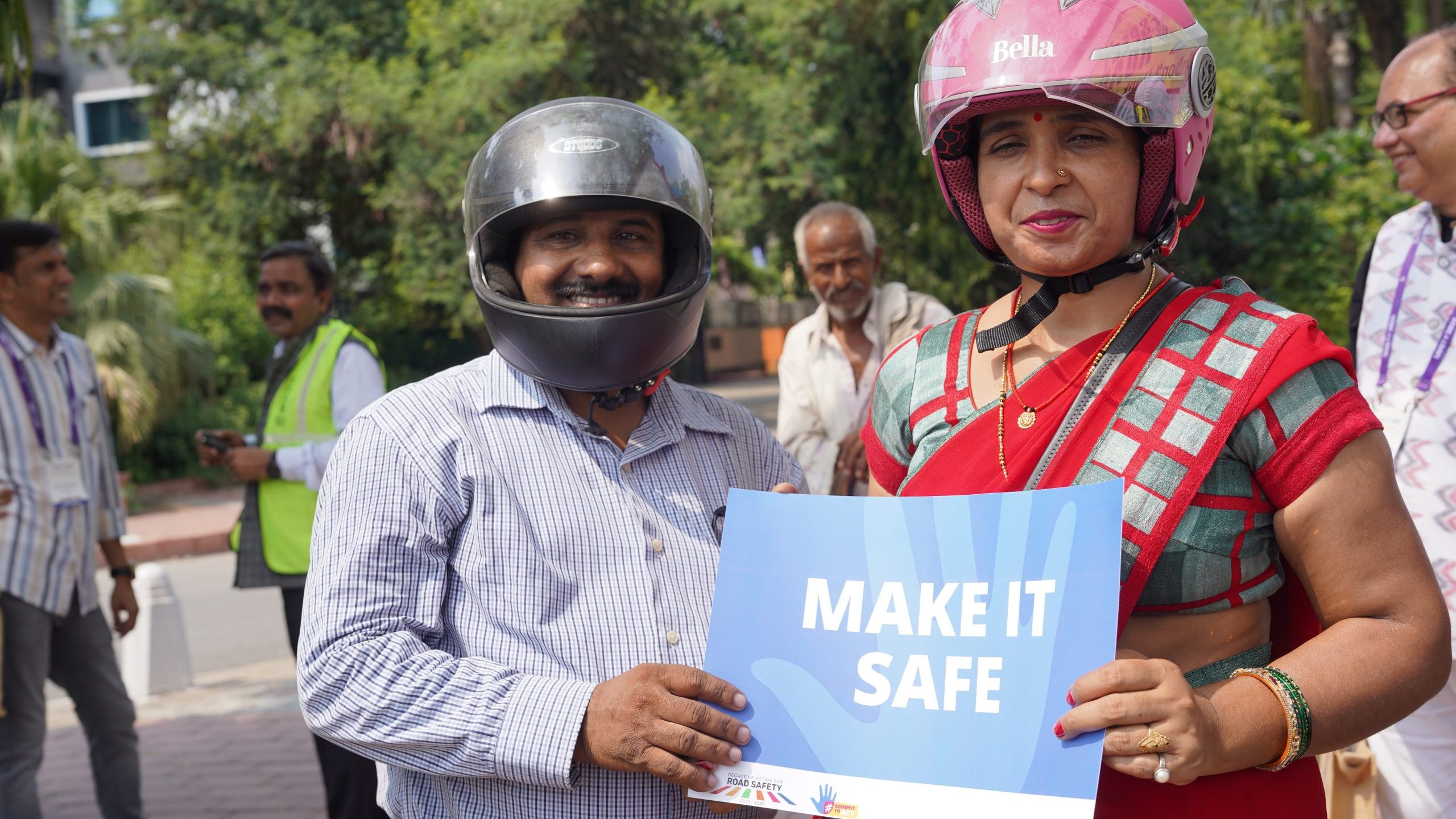
People want and expect to be protected when they buy a motorcycle helmet. However, they are often let down by the proliferation of non-standard and fake helmets.
On Sunday 1 September in Delhi, India, the Alliance held a “walkshop” with support from Uber, as part of the Safety 2024 pre-conference program to investigate the availability and affordability of safe motorcycle helmets.
The session incorporated a community consultation where motorcycle riders were asked about their helmet and why they chose it. The community consultation was one of a number of similar consultations conducted by Alliance members in different countries, known as Helmet Snapshots.
The results from the Helmet Snapshot in Delhi, corresponded to those in other countries. Riders cited safety as a key consideration when buying a helmet and were often prepared to pay a little more to ensure their helmet was safe. Take the example of Santosh (not his real name). He spent a little more than the average to make sure it was a good one. It has served him well, including in a crash. Experts at the session checked his helmet. It was good quality but it’s age and that it had been in a crash meant it was time for a new one.
Similarly, Shailesh (also not his real name) uses his motorcycle for commuting every day and knows that a safe helmet will protect him. Like Santosh, he spent a little more on his helmet to make sure it was safer. Santosh’s wife, Pooja, however, only rides occasionally with her husband. As a result, the couple had bought her a cheaper helmet, but still expecting that it would protect her in a crash. Pooja’s helmet proved to be non-standard and a quick demonstration showed how easily it would break in the event of a crash. She was gifted a new, safe, standard helmet in the session.
“There are many loopholes to address—importing, manufacturing, helmet market—that are not being regulated or enforced, making substandard and fake helmets available. Substandard and fake helmets are also sold at a lower price than standard helmets because they do not have the quality material and quality construction that are well-tested. Availability of substandard and fake helmets mean people are not guaranteed safe helmets – we are letting people down,” says Chika Sakashita, Global Alliance of NGOs for Road Safety.
The session showed that while riders valued safety and tried to buy what they believed to be safe helmets, non-standard helmets can be difficult to distinguish from safe, standard ones. The proliferation of fake helmets—those masquerading as reputable brands or displaying fake standard stickers—makes it even harder.
The findings from the community consultation and walkshop participants’ experiences from around the world will feed into a publication by the Alliance to be launched in 2025 at the 4th Global Ministerial Conference on Road Safety.